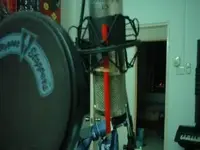J
JLM
New member
I searched a bit here and learned that there are two options for achieving de-essing by using the compressor/eq sidechain method. You can either use a graphic eq or a parametric eq. The general consensus seems to be that the parametric eq is the best choice as it leaves far less chance to screw up a track during de-essing.
I searched for a parametric eq and they're all really pricey compared to a graphic eq. I did find a Presonus parametric eq for $99. Seeing as the only use I'll have for this eq is de-essing, would it be worthwhile to get this cheap parametric eq? All the graphic eq's are pretty cheap. There's a DBX 31 band eq for $150. Any advice would be most appreciated.
I searched for a parametric eq and they're all really pricey compared to a graphic eq. I did find a Presonus parametric eq for $99. Seeing as the only use I'll have for this eq is de-essing, would it be worthwhile to get this cheap parametric eq? All the graphic eq's are pretty cheap. There's a DBX 31 band eq for $150. Any advice would be most appreciated.



